From Light to Craft
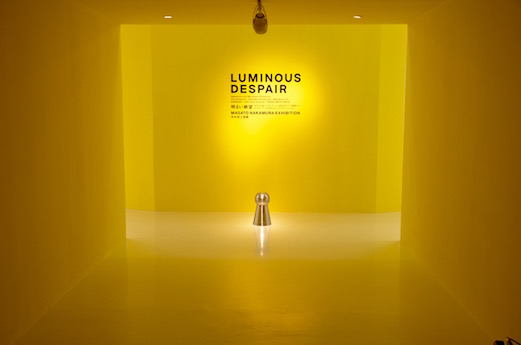
It’s a much-anticipated event: after more than a decade since Masato Nakamura’s last public exhibition, his sculptures, installations, videos and photographs are on display in central Tokyo. Having represented Japan at the 49th Venice Biennale in 2001, the artist secured a respected place in the contemporary Japanese art scene before turning away from the limelight. Now that his work is back in the gallery, was it worth the wait?
The entrance to the exhibition is radiant with promise. At the end of a corridor stands a small metal bollard that resembles a keyhole. The walls and ceiling are painted yellow, flooding the white floor with reflected color. This hue is deliberate, recalling Nakamura’s work for the Japanese Pavilion in Venice, where where he installed a ring of giant, illuminated arches based on the McDonald’s logo. Nakamura’s previous work led viewers to an arena without a product, combining the allure of light with the deceits of empty branding.
By stark contrast, “Luminous Despair” doesn’t hollow out so much as fill things in. From the formative photography of his student days in Japan and Korea to his recent installations, the exhibition expands ambitiously, perhaps overwhelmingly so. Among the 700 photos amassed for this show are candid portraits of fellow students Tsuyoshi Ozawa and Lee Bul, taken between 1989 and 1994. While these images form a substantial social document in themselves, they are merely one element of several, for “Luminous Despair” is at least three exhibitions in one.
Recent episodes in art history are born witness here. Alongside a modest video screen showing performances, a selection of photos document street interventions of the early 1990s. Notable examples of Nakamura’s early collaborations aimed at public engagement include “The Nakamura and Murakami Exhibition” (Seoul-Tokyo-Osaka 1992-3); “The Ginburart” (1993), in which Nakamura and fellow artists hijacked the public spaces of Ginza surrounding famed commercial galleries; and “Shinjuku Shonen Art” (1994), a similar event in Shinjuku.
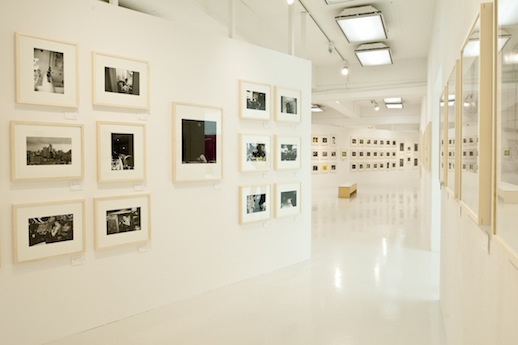
Tellingly, the photography also reveals what first drew the artist’s lens. Mainly in black and white but occasionally in color, these works establish an early interest in the narratives of everyday objects. As photos, they aren’t overly precious, appearing un-staged and understated. Traffic bollards, barbershop poles and giant bowling pins feature among the common street scenes of Tokyo, Osaka and Seoul, as do golf kits in carparks, inflatable boats on shopfronts and lions’ head door knockers, to name but a few.
What unites these photos is how the appearance of ordinary objects in them asserts itself in the egalitarian context of the street. Capturing city scenes as though the urban environment was an immersive readymade to exploit, these photos pinpoint subjects the artist later developed in his career: light and branding, in particular.
Although the exhibition is not a comprehensive retrospective, it is easy to appreciate the relationship between the photos of street signs and Nakamura’s celebrated show ‘Conbini’. During the late nineties, Nakamura made several wall-mounted light sculptures that conveyed all the authority of Minimalist installation but in fabricated in colors corresponding directly with convenience store branding. The logo-less ‘Conbini’ works brought this ubiquitous street architecture into the gallery. Pitting the everyday against the prestige of art, Nakamura let viewers’ expectations come undone by their own brand literacy.
Getting back to “Luminous Despair”, a room of new works continues this line of enquiry. Installed like paintings in a separate showroom are ten monochrome objects presented so that they and the gaps between them are uniformly spaced, each object given equal emphasis. With glossy, streamlined surfaces, they arc like rigid sails with industrial design finishes, as if they come straight from the conveyor belt. All that separates one from another is color.
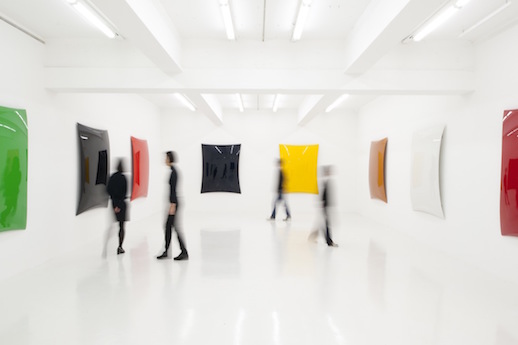
Paying closer attention to the floor map, one notices luxury car brands listed alongside the names of the automotive paint colors: Ferrari, Porsche, Toyota, and others are printed beside colors with names like Tambora Flame, Signal Green and Starlight Black. Again without logos, these update Nakamura’s interest in brand identities, their signature colors, distinctive finishes and the values ascribed to them. In this instance, as he appropriates from exclusive product ranges, the colors aren’t immediately recognizable to all but a few. But perhaps this is the point.
Nakamura is interested in the role of the individual artist within the social context. Sometimes he addresses how the artist’s relationship with a certain community impacts the reception of artwork. Other times he questions the co-dependency of corporate sponsorship in the production of a work of art. The car panel project he initiated independently, crafting an original mold by hand before negotiating paint from the companies that supply the car manufacturers. As a producer of rare works, Nakamura makes something that appears machine replicable whilst maintaining a distance from corporate factories and keeping hold of the artist’s touch.
So, was “Luminous Despair” worth the wait? Yes, but this turns out to be a misleading question – while the show marks Nakamura’s return to the studio, he has hardly been absent from the art world. His focus in recent years may be perceived as shifting from work to frame, or from the viewer to the community, but in fact these have long been ongoing concerns. Even as early as 1998, Nakamura established the artist-run initiative ‘Command N’. Almost two decades later, it hardly comes as a surprise that he is the director of 3331 Arts Chiyoda, the former Junior High School turned into a community art center, and the same venue to host this exhibition.
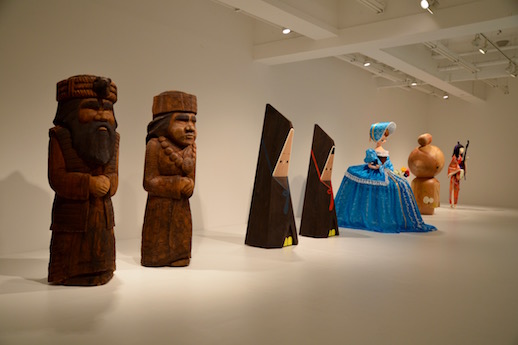
What “Luminous Despair” does signal is a move to incorporate diverse production methods and traditional crafts. Nowhere is this more apparent than in the last room, which presents seven near-human-size figurines from Hokkaido, Akita, Aichi, Gunma and Okinawa, each produced along with local artisans from their respective provinces. Enlarging popular souvenirs from the Showa era opens Nakamura’s practice up to subjects rooted in cultural traditions, leaving one to wonder about future artworks. Let’s just hope it isn’t a decade before the next show.
Luminous Despair runs until 23rd November at 3331 Arts Chiyoda
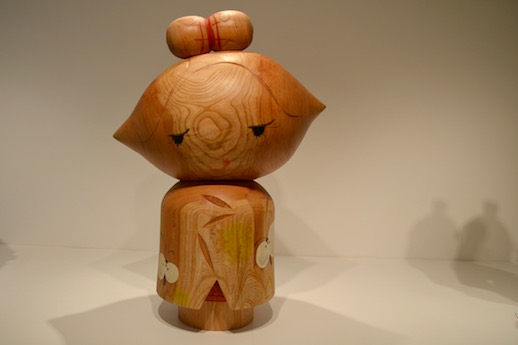
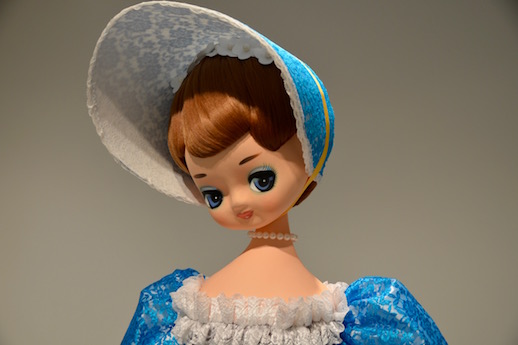
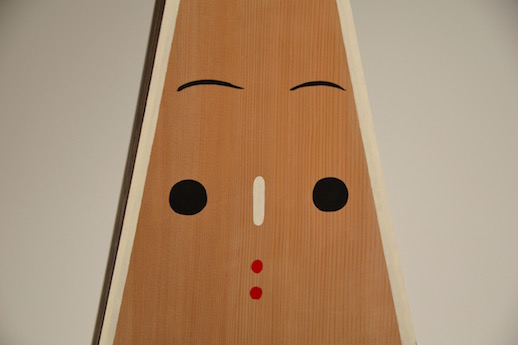
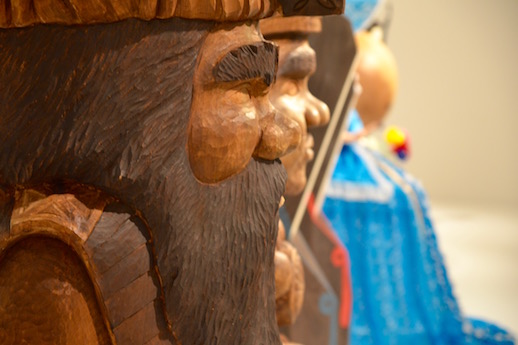
Nick West
Nick West



